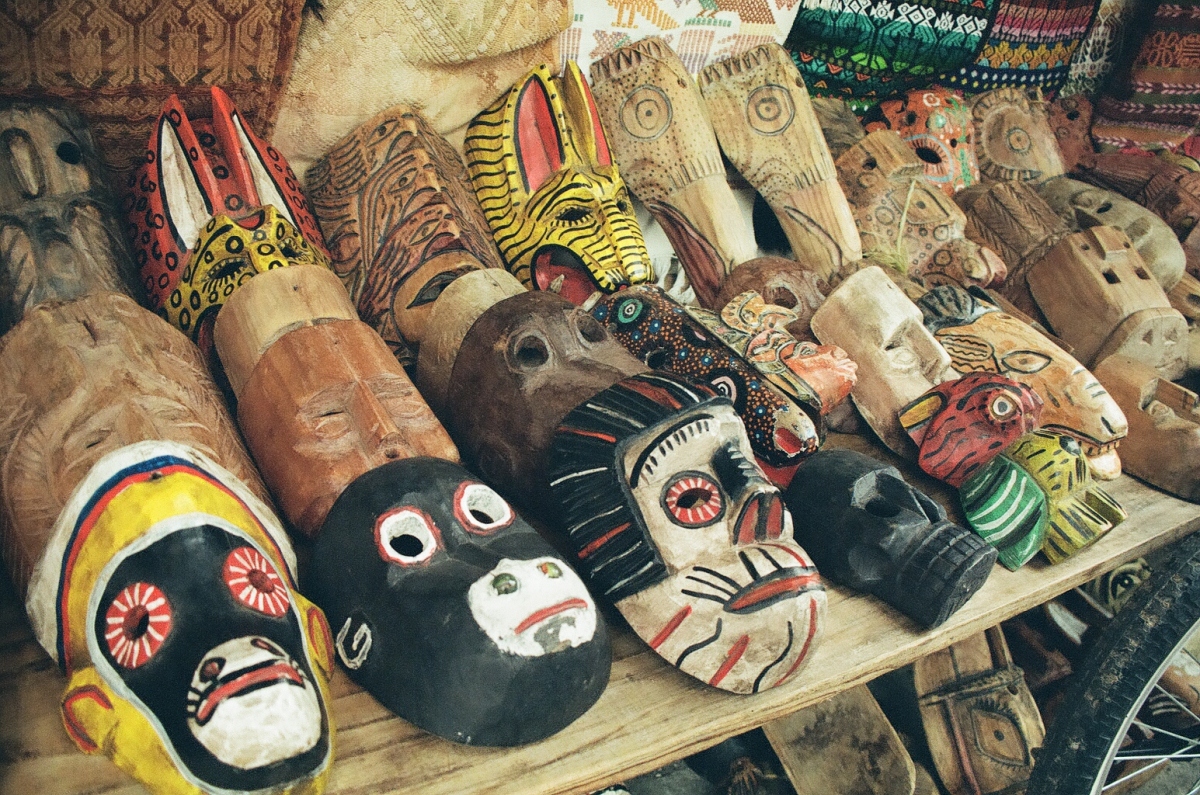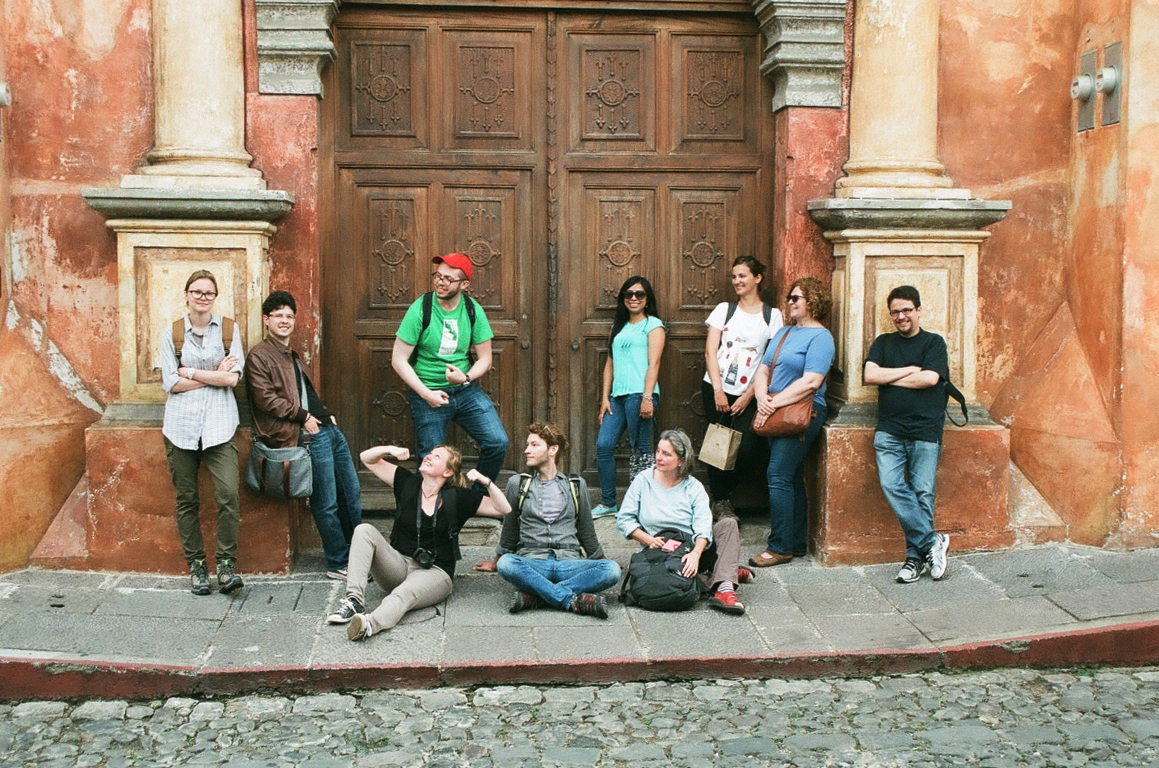- A
- A
- A
- ABC
- ABC
- ABC
- А
- А
- А
- А
- А
- HSE University
- Faculties
- Faculty of Humanities
- School of Linguistics
- News
- Our Summer Studying Shamans, the Mayan calendar, and the Kaqchikel Language
The School of Linguistics was founded in December 2014. Today, the School offers undergraduate and graduate programs in theoretical and computational linguistics. Linguistics as it is taught and researched at the School does not simply involve mastering foreign languages. Rather, it is the science of language and the methods of its modeling. Research groups in the School of Linguistics study typology, socio-linguistics and areal linguistics, corpus linguistics and lexicography, ancient languages and the history of languages. The School is also developing linguistic technologies and electronic resources: corpora, training simulators, dictionaries, thesauruses, and tools for digital storage and processing of written texts.
Digital Humanities
Bangkok: Association for Computational Linguistics, 2024.
Linguistica Uralica. 2025. Vol. 61. No. 2. P. 106-130.
In bk.: BivalTyp: Typological database of bivalent verbs and their encoding frames. .
arxiv.org. Computer Science. Cornell University, 2024

Our Summer Studying Shamans, the Mayan calendar, and the Kaqchikel Language
Is it possible to learn a new language well enough in just two weeks to conduct linguistic research on it? This is an entirely standard practice for linguists, according to Sasha Kozhukhar and Liza Vostokova, both students in the Linguistic Theory and Language Description master’s programme. This past summer, Sasha and Liza went on an expedition to Guatemala to study Kaqchikel, an indigenous Mayan language.
Kaqchikel is a fairly large language in terms of speakers with several hundred thousand native speakers in Guatemala, Belize, and Mexico. Liza and Sasha did not speak a word of Kaqchikel before their trip to Guatemala, however, as they had focused on the languages of Dagestan, Adygea, and other Russian regions. They had also studied Spanish, though, and it is thanks to this that the head of the School of Linguistics, Ekaterina Rakhilina, suggested that they go to Guatemala, where Spanish is the official language. The trip was organised by Maria Polinsky from the University of Maryland (U.S.) together with the Universidad del Valle de Guatemala. ‘We are very grateful to Ekaterina Rakhilina and Maria Polinsky for giving us the opportunity to go on this type of expedition,’ the two students say.
Sasha and Liza spent two weeks studying the language and another two conducting their own research. ‘We have a theoretical background, and we understand how a language can be structured. This makes it [easier] to grasp the characteristics of a certain language. This is why it takes more effort for someone without this background to, not learn a new language, but understand something about it,’ Liza explains.
Smartphone versus Fruit
Language lessons and research took place in the small towns of Tecpán and Patzún. Sasha and Liza both lived with host families who at the same time served as the two students’ research informants. This is the term used to describe native speakers of a language who help a researcher by serving as a linguistic reference in a project. The locals were extremely friendly and willingly helped the researchers.
‘Living conditions were drastically different than what we were used to,’ Liza comments. ‘Firstly, there are big problems with clean drinking water. Water runs through the pipes once a day, and it is collected in huge stone baths before being used. Secondly, everything is cooked on a wood stove. In one family, we saw that their wood stove was right next to a gas stove, but they didn’t use the gas stove while we were there.’
But there is internet and mobile service in town, and everyone has a smartphone, Sasha adds. ‘A child may never in his or her life taste fruit, but they’ll have a tablet,’ she jokes. Sasha and Liza once bought different local fruits at a market, and gave lychee to their 12-year old host brother. He ate it up, and his mom said that before that he had never tried lychee, even though they grow in Guatemala and are not very expensive. Sasha has a theory as to why this happens.
‘People there have lived in poverty for a fairly long time, and this hasn’t really changed much. And the higher in the mountains you get, the poorer and less educated everyone is,’ she says. ‘I believe that even as the quality of life improves, not everyone gets in the habit of eating correctly or, say, bathing everyday.’
In addition, many indigenous Guatemalans do not trust doctors and prefer to go to a shaman when ill.

Shamans and Mayan Cosmology
Guatemala is officially a Christian country, but the shaman is an important figure for the rural population. Near the city of Técpan, where the girls studied, are ruins of the ancient Mayan city of Iximche. This is a sacred location for the locals, and shamans regularly go there to burn different candles, bark, sugar, chocolate, grain, and powders. Sasha and Liza also went there one day and spent four hours learning about Mayan cosmology from a shaman (in Spanish). The shaman also taught them the meaning behind Mayan girl names.
Adhering to local tradition, the indigenous population names infants according to the Mayan calendar, which breaks up the year into 13- and 20-day cycles that run parallel to one another. Because of this, the name of each day of the year consists of two words, one from each cycle. This title can also be a person’s name. According to the calendar, Sasha became Wo’o Ajpub’, and Liza – Kaji’ Aj. There are entire books written on how to convert the Mayan calendar to the Gregorian.
‘That Which Juan Bought at the Market’
‘We have been studying non-European languages for some time now, so we’re not scared of them,’ Sasha jokes. ‘For example, in the Adyghe language, you can express an entire sentence using a single word thanks to the prefixes that are added to the verb. Mayan has something similar. You can add a pronoun-identifying prefix to a verb, and a sentence like ‘I hit you’ or ‘I bit you’ comes together in a single word. Such languages are called polysynthetic languages. In addition to Adyghe and Mayan, Basque is also polysynthetic.’
Kaqchikel did surprise the students, however, with its complex gender-oriented system for describing kinship. In particular, a girl and a boy would use different words to describe his or her brothers and sisters, and in this case it is not just gender that is important, but the age of the brother or sister as well.
During the expedition, Sasha studied how relative clauses are constructed in Kaqchikel. In Russian, for example, a sentence would use the word ‘which’ or ‘who’ (the girl who is baking the cake), but there is no suitable equivalent in Russian or Spanish for the way Kaqchikel relative clauses work. ‘In the Russian example, the word “girl” is the main word and height of the relative clause,’ Sasha says. ‘Kaqchikel can have relative clauses that do not have this “height,” that is, there is no girl. So there are examples where relative clauses are tacked onto sentences with the verb “to be,” so you get something like “there is that which Juan bought at the market.” In Russia, and in the majority of languages around the world, you can’t say this, but in Kaqchikel you can,’ Sasha explains.
 Группа студентов из Университета Мэриленда и НИУ ВШЭ
Группа студентов из Университета Мэриленда и НИУ ВШЭ
The verb ‘to be’ places certain limitations on what can happen with this sentence. ‘I was testing the hypothesis that the syntactical structure of these special relative clauses is the same as in ordinary relative clauses (those similar to the sentence about the girl), i.e., that the syntax tree of these clauses is practically the same as that of ordinary relative clauses,’ Sasha says, describing her research. ‘It is assumed that the tree for my sentence is missing a node. This is the same hypothesis postulated for another Mayan language – Chuj – but this couldn’t be proven because there was no way of showing whether this node exists or not. You can do this with Kaqchikel, and it seems that I was able to prove this,’ she notes.
Liza, on the other hand, studied how possessives work in Kaqchikel. A simple example is ‘my book.’ In Kaqchikel, the meaning of my, your, his, etc. is expressed using prefixes. These prefixes can mean not only ‘my book,’ for example, but also ‘a book for me,’ Liza explains. ‘Kaqchikel is also interesting in that it has words that cannot be used without specifying to whom the noun belongs (a so-called inalienable belonging). If you need to talk about such an object without specifying who owns it, then you add a special suffix to the word. These words include kinship names, parts of the body, “home” and “pants,” though the word pants is becoming less “inalienable,”’ Liza notes.
Aside from possessives, Liza also looked at ways of expressing parts of a whole, e.g., a piece of bread, the centre of the city, etc. She started by looking at terms that describe parts of different material objects whose names in Kaqchikel, like in Russian, often go together or are the same as parts of the body. Examples include door handle, table leg, and teapot spout, which in Russian is the ‘nose’ of a teapot (nosik chainika).
What’s Next?
Sasha and Liza are ultimately planning to turn their research into articles and conference presentations, but they also believe they have a certain educational obligation to fulfil. ‘We have to make the study of Mayan languages more popular among the Russian linguistic community,’ Sasha says. ‘Many people we know have already shown an interest because of how exotic it is. I think that linguists are always looking for something on the more exotic side,’ she adds.
As for non-linguists, Sasha and Liza believe it is important to make the study of non-European languages more widespread. Many people think that European languages are the most developed, while the rest are lagging behind. But this is not the case; all languages are unique in their own way, the girls believe.
And of course, ‘if we are offered the opportunity to go on an expedition like this again, we’ll undoubtedly say yes,’ Liza concludes.
- About
- About
- Key Figures & Facts
- Sustainability at HSE University
- Faculties & Departments
- International Partnerships
- Faculty & Staff
- HSE Buildings
- HSE University for Persons with Disabilities
- Public Enquiries
- Studies
- Admissions
- Programme Catalogue
- Undergraduate
- Graduate
- Exchange Programmes
- Summer Schools
- Semester in Moscow
- Business Internship
- © HSE University 1993–2026 Contacts Copyright Privacy Policy Site Map
- Edit

